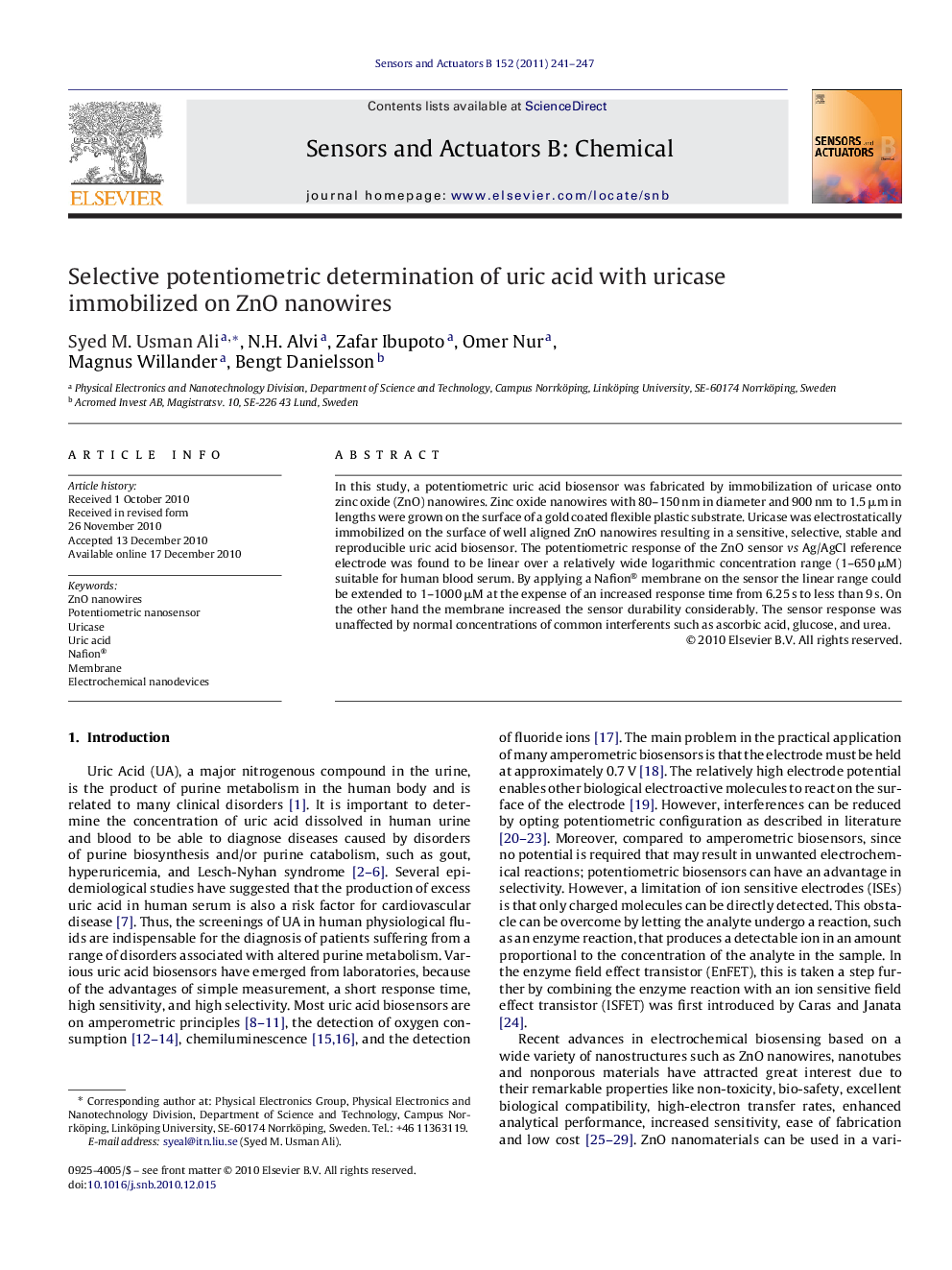| Article ID | Journal | Published Year | Pages | File Type |
|---|---|---|---|---|
| 10410280 | Sensors and Actuators B: Chemical | 2011 | 7 Pages |
Abstract
In this study, a potentiometric uric acid biosensor was fabricated by immobilization of uricase onto zinc oxide (ZnO) nanowires. Zinc oxide nanowires with 80-150 nm in diameter and 900 nm to 1.5 μm in lengths were grown on the surface of a gold coated flexible plastic substrate. Uricase was electrostatically immobilized on the surface of well aligned ZnO nanowires resulting in a sensitive, selective, stable and reproducible uric acid biosensor. The potentiometric response of the ZnO sensor vs Ag/AgCl reference electrode was found to be linear over a relatively wide logarithmic concentration range (1-650 μM) suitable for human blood serum. By applying a Nafion® membrane on the sensor the linear range could be extended to 1-1000 μM at the expense of an increased response time from 6.25 s to less than 9 s. On the other hand the membrane increased the sensor durability considerably. The sensor response was unaffected by normal concentrations of common interferents such as ascorbic acid, glucose, and urea.
Related Topics
Physical Sciences and Engineering
Chemistry
Analytical Chemistry
Authors
Syed M. Usman Ali, N.H. Alvi, Zafar Ibupoto, Omer Nur, Magnus Willander, Bengt Danielsson,
